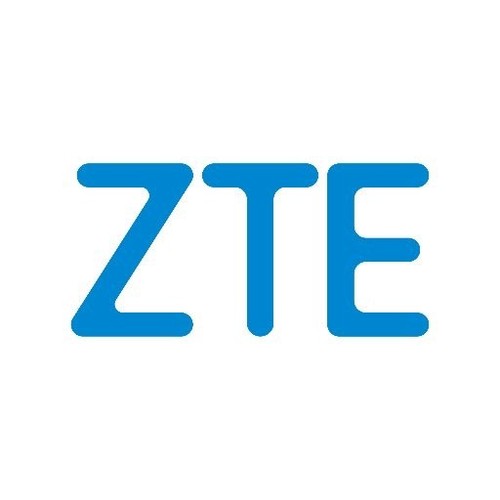XGS-PON Moves Center Stage
XGS-PON is gaining momentum. Capable of delivering symmetrical 10G, this passive optical network (PON) variant is a huge step up from gigabit PON (GPON). Brownfield and greenfield operators in different parts of the world are seeing the ROI appeal.

XGS-PON is gaining momentum. Capable of delivering symmetrical 10G, this passive optical network (PON) variant is a huge step up from gigabit PON (GPON). Brownfield and greenfield operators in different parts of the world are seeing the ROI appeal.
GPON underpins many of today’s fibre-to-the-home (FTTH) architectures, delivering 2.5G downstream and 1.25G upstream. But declining XGS-PON equipment costs and the prospect of monetizing their networks more quickly — for both residential and non-residential applications —is leading many services providers to deploy symmetrical 10G.
According to Dell’Oro Group, XGS-PON is set for stellar growth. Looking at the PON market as a whole, which includes network-side optical line terminal (OLT) cards and subscriber-side ONT/ONU (optical network terminal/optical network unit) devices, the market research firm calculates that PON equipment revenue — driven largely by XGS-PON deployments in North America, EMEA and CALA – will jump from $8.3 billion in 2021 to $9.8 billion in 2026.
Although XGS-PON only accounted for 15% of the overall PON market in 2021, according to Dell’Oro figures, that’s expected to reach 55% by 2026. “We think XGS-PON will overtake GPON in 2024,” says Jeff Heynen, VP of broadband access and home networking at Dell’Oro.
Research firm Omdia, a sister company to Light Reading, also sees strong XGS PON traction, particularly in North America and parts of Europe. “Almost half of OLT port shipments were XGS PON in the US during 2021,” says Julie Kunstler, Chief Analyst at Omdia. “It’s a huge jump.”
Omdia tracks the broader 10G PON market, which includes both XGS-PON and XG PON (asymmetric 10G/2.5G bandwidth). XGS-PON, however, seems to be winning the hearts and minds of most. “10G PON is all XGS in the US, and almost all XGS in western Europe,” says Kunstler.
XGS-PON is also on the rise in China. The country’s Ministry of Industry and Information Technology has announced an “Action Plan for Collaborative Development of Dual-Gigabit Networks (2021-2023)”. Aimed at building both fixed and mobile gigabit networks to all urban areas and as many rural areas as possible, the digital action plan is supported by China Mobile and China Telecom. Both operators are using advanced PON technologies, but especially XGS-PON notes ZTE, to accelerate deployment of “dual-gigabit” networks.
Residential growth
For many service providers, particularly those with high-end residential subscribers, Kunstler thinks that choosing XGS-PON for residential FTTH rollout is pretty much a no-brainer.
When it comes to bandwidth capacity, reminds Kunstler, XGS-PON is four times better than GPON on the downstream and eight times superior on the upstream. “If the cost differential between XGS PON and GPON equipment is less than four or five times, why wouldn’t you use XGS-PON?” she asks.
This type of thinking, says Kunstler, has led many FTTH service providers — either starting rollout or expanding geographically — to opt for XGS-PON “knowing it will be good for years.” Like Dell’Oro’s Heynen, Kunstler anticipates symmetrical 10G PON will support FTTH residential capacity demands until the end of the decade. “For greenfield operators in particular,” says Kunstler, “XGS PON is an easy decision.”
Demand in the high-end residential segment for symmetrical 10G is already starting to emerge in some markets. Omdia notes that around 30 service providers are offering 10G residential services, supporting the likes of gamers and workers from home who need to upload large files.
Smooth migration path from GPON to XGS-PON
Reassuringly for GPON operators, there’s a smooth and flexible migration path to XGS-PON. They can adapt quickly to increased bandwidth demand from customers (or respond to competition) where and when it occurs within their existing FTTH footprints.
One of the beauties of PON is that operators don’t need to upgrade the network side (OLT) and the subscriber side (ONT/ONU) at the same time. By replacing OLT cards with ‘combo’ PON line cards in the central office, operators can provide XGS-PON and GPON services simultaneously over the same network. It means the network is future proofed. Combo cards enable GPON operators to upgrade ONU/ONTs to XGS-GPON-capable devices as and when customers require them.
Moreover, by reusing existing network equipment and the same optical distribution network, combo cards eliminate the need to change the existing fibre network. Nor do they take up extra floor space. Operators have peace of mind that responding quickly to customer demand for higher data rates does not mean a hike in opex.
Non-residential growth
Beyond residential FTTH, Kunstler sees “huge opportunities” for service providers using XGS-PON. According to Omdia, 10G PON ONTs/ONUs will be used in enterprises, smart city, campus and xHaul transport applications.
“Business services can take advantage of XGS-capable subscriber-side equipment,” points out Kunstler, which can offer various symmetric speeds up to 8G and still meet stringent service level agreements demanded by enterprises.
For larger enterprises XGS-PON will not necessarily mean the shelving of their valuable point-to-point (P2P) Ethernet services, however. Kunstler anticipates that operators will likely keep P2P Ethernet for high-end enterprises but migrate SMEs onto XGS-PON to create new revenue opportunities. For some operators who have not supported business services, adds Kunstler, there’s an opportunity to roll out XGS-PON to perhaps a central business district. “They can compete where they couldn’t compete before,” she says.
Although Kunstler concedes that the PON opportunity for 5G macro-cell backhaul is “relatively small,” this is not the case in dense urban areas where operators are installing numerous small cell 5G antennas. “The topology here begins to look a lot like point-to-multipoint,” says Kunstler, “so why not use PON?”
The bigger XGS-PON picture for operators is to reuse the same architecture for residential and non-residential applications. In this way, service providers can generate additional sources of revenue and get a quicker ROI on their fiber rollout.
The time for XGS-PON, for many operators, has arrived.
— Ken Wieland, Contributing Editor, Light Reading
This content is sponsored by ZTE.
About the Author(s)
You May Also Like












